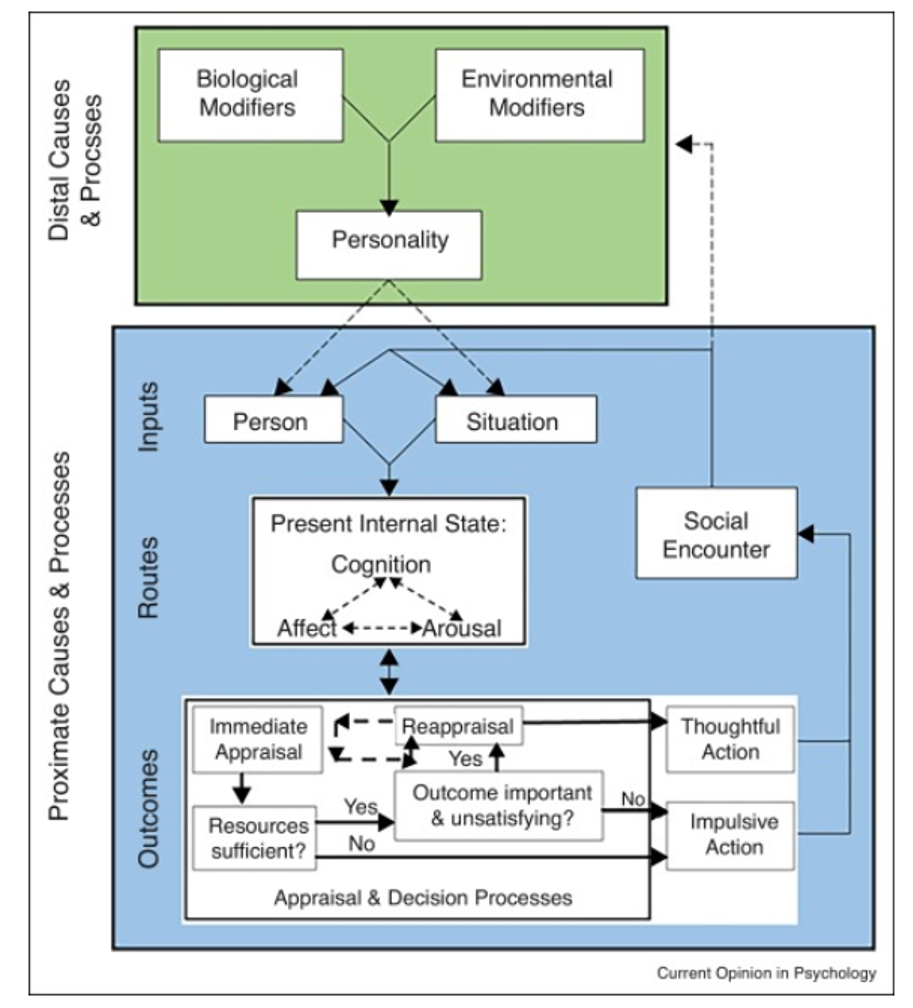Anderson and Colleagues’ General Aggression Model (GAM)
Figure 10
The emotion portion of the GAM Model (Anderson et al., 1995)

Reproduced from “Hot temperatures, hostile affect, hostile cognition, and arousal: Tests of a general model of affective aggression,” by C.A. Anderson, W.E., Deuser, and K.M. DeNeve, 1995, Personality and Social Psychology Bulletin, 21(5), p. 436. (Hot Temperatures, Hostile Affect, Hostile Cognition, and Arousal: Tests of a General Model of Affective Aggression) Copyright 1995 by the Society for Personality and Social Psychology, Inc.
Anderson and colleagues (1995) developed a model similar to the CNA called the General Aggression Model (GAM). The overall model is displayed in Figure 11 and the part most relevant to anger is shown in Figure 12. We will focus on the emotion portion of the model. But, keep in mind his overall model accounts for personality and social influences on emotion. Similar to the CNA, the GAM states that the emotion episode starts with an aversive event that causes unpleasantness, termed acute situational variables in Figure 10 or simply situation in Figure 11. The acute situational variable automatically influences aggressive cognitions, affect, and physiological arousal. These three emotion components occur quickly and automatically. In addition, the arrows in the model demonstrate that each component may influence the other component. Primary appraisals are our quick and automatic interpretations of aggressive cognitions, affect, and arousal. Anderson and colleagues (1995) state that if time allows, we engage in more conscious, secondary appraisals. During the secondary appraisal, we might change our emotion label based on new interpretation or new information. Primary OR secondary appraisals could lead to behavioral choice. If we do not have time for secondary appraisals, our earlier automatic primary appraisals quickly determine whether we avoid or approach. It is interesting to note that perceptions of coping are considered a secondary appraisal, suggesting this is a more conscious process.
If you are interested in reviewing the entire model,
read this article by Allen, Anderson, and Bushman (2018).
Figure 11
The Complete GAM Model (Allen et al., 2018)

Reproduced from “The General Aggression Model,” by J.J. Allen, C.A. Anderson, and B.J. Bushman, 2018, Current Opinion in Psychology, 19, p. 76 (The General Aggression Model) Copyright 2017 by Elsevier, Ltd.



